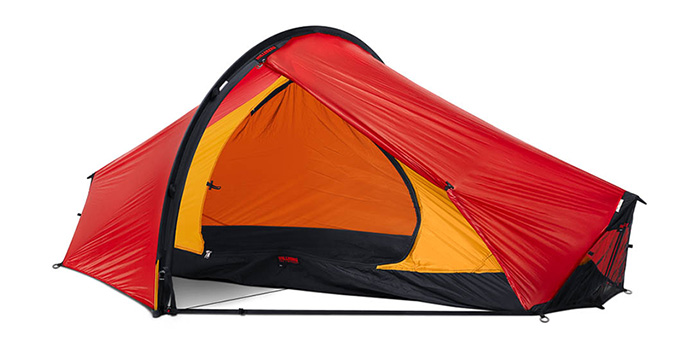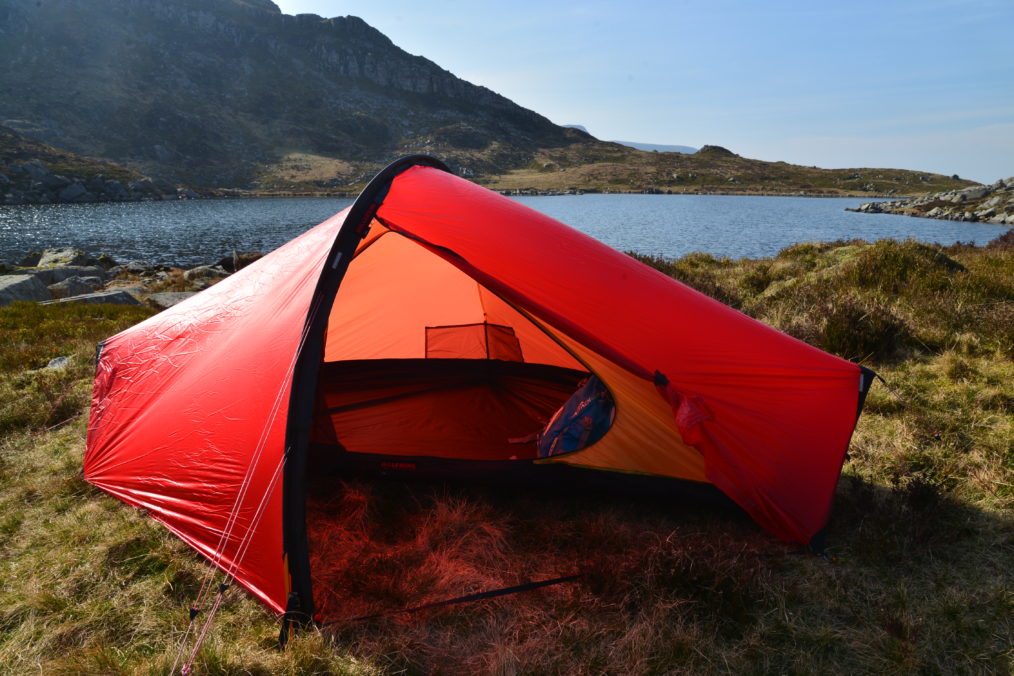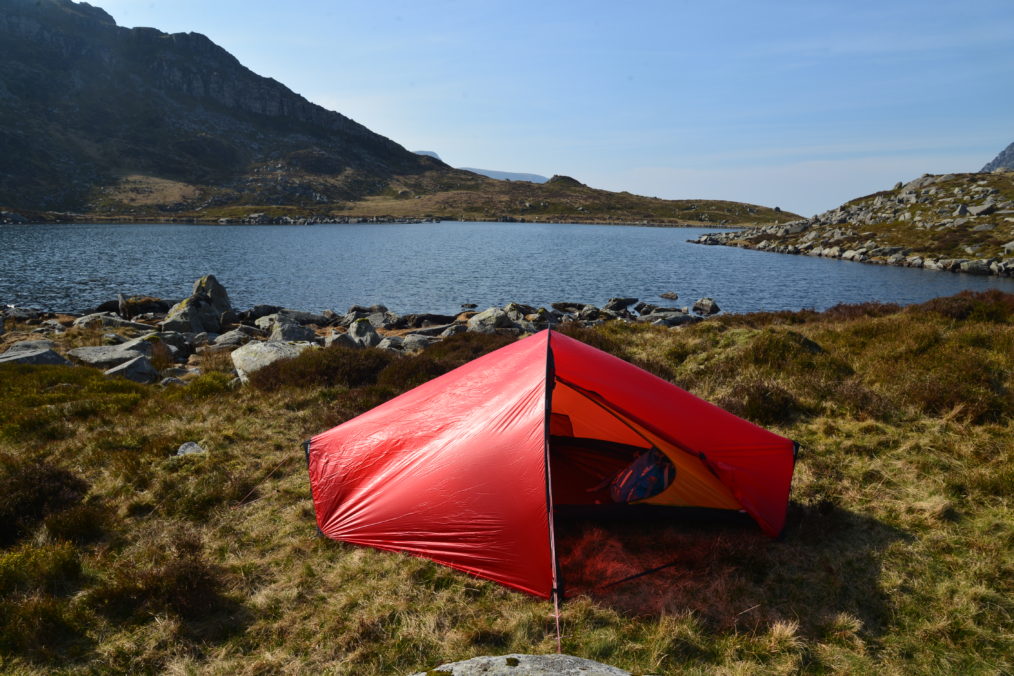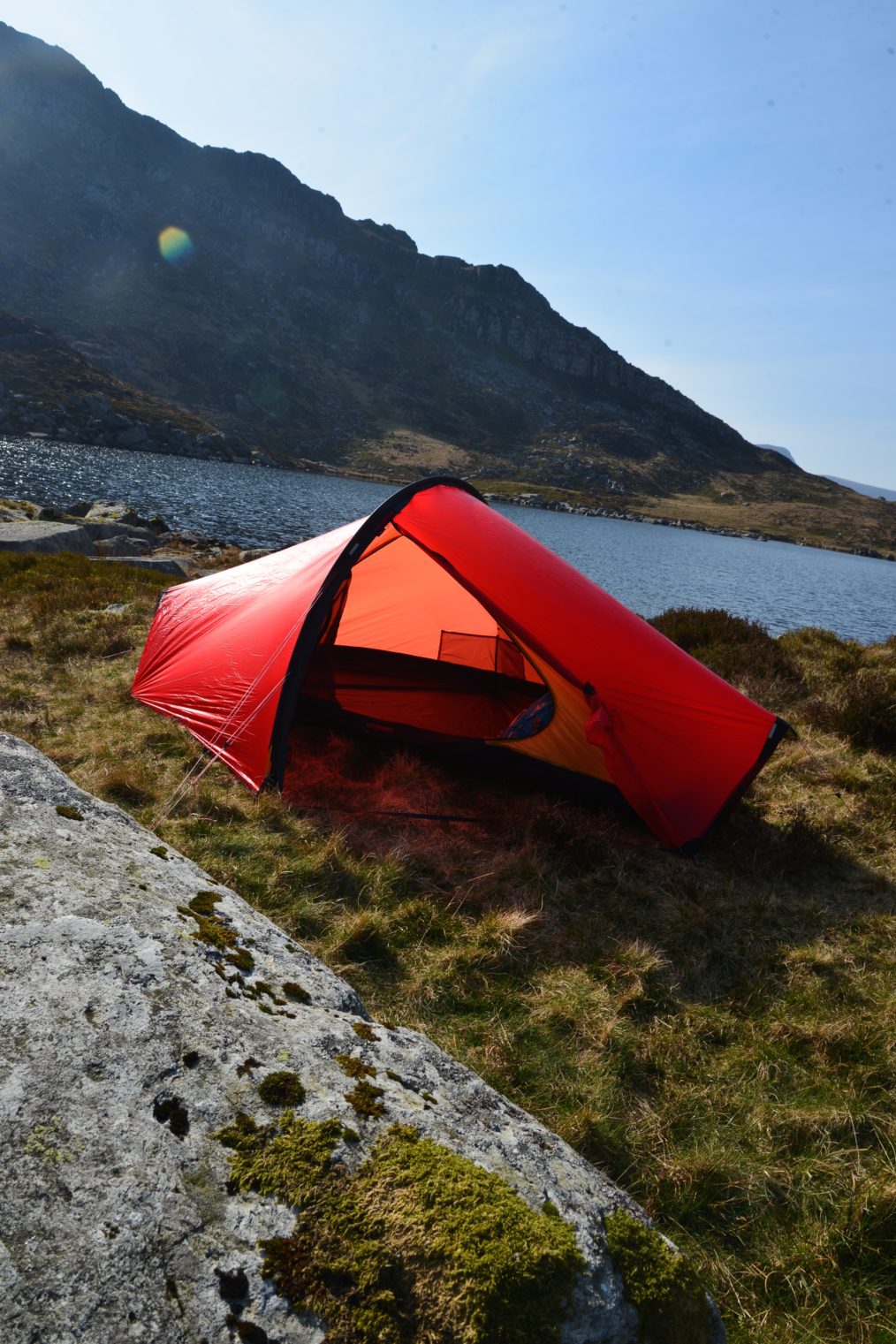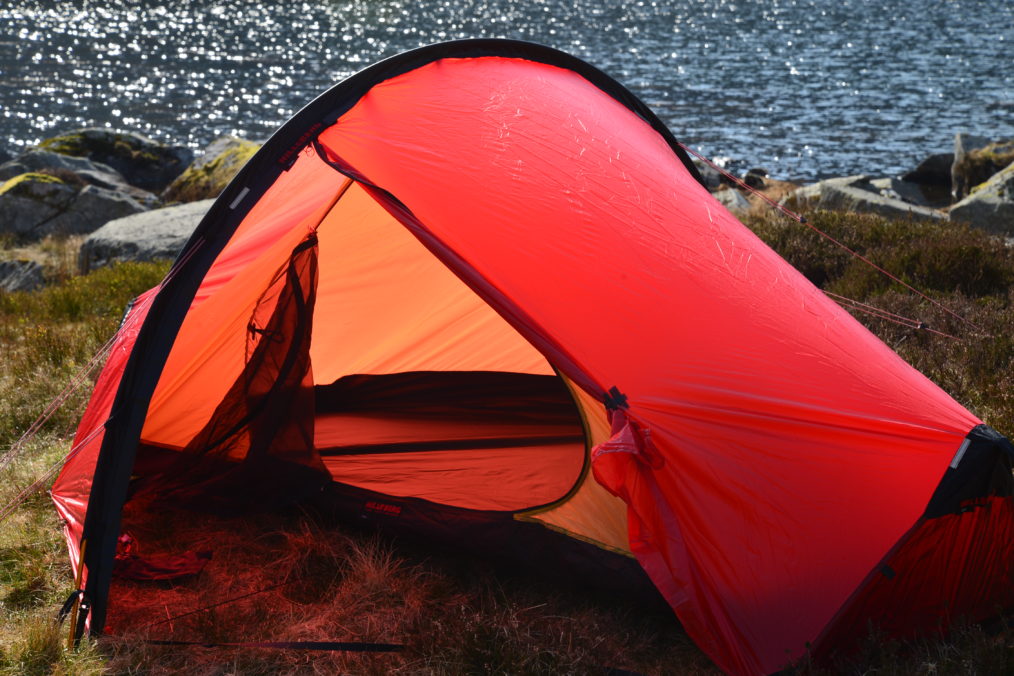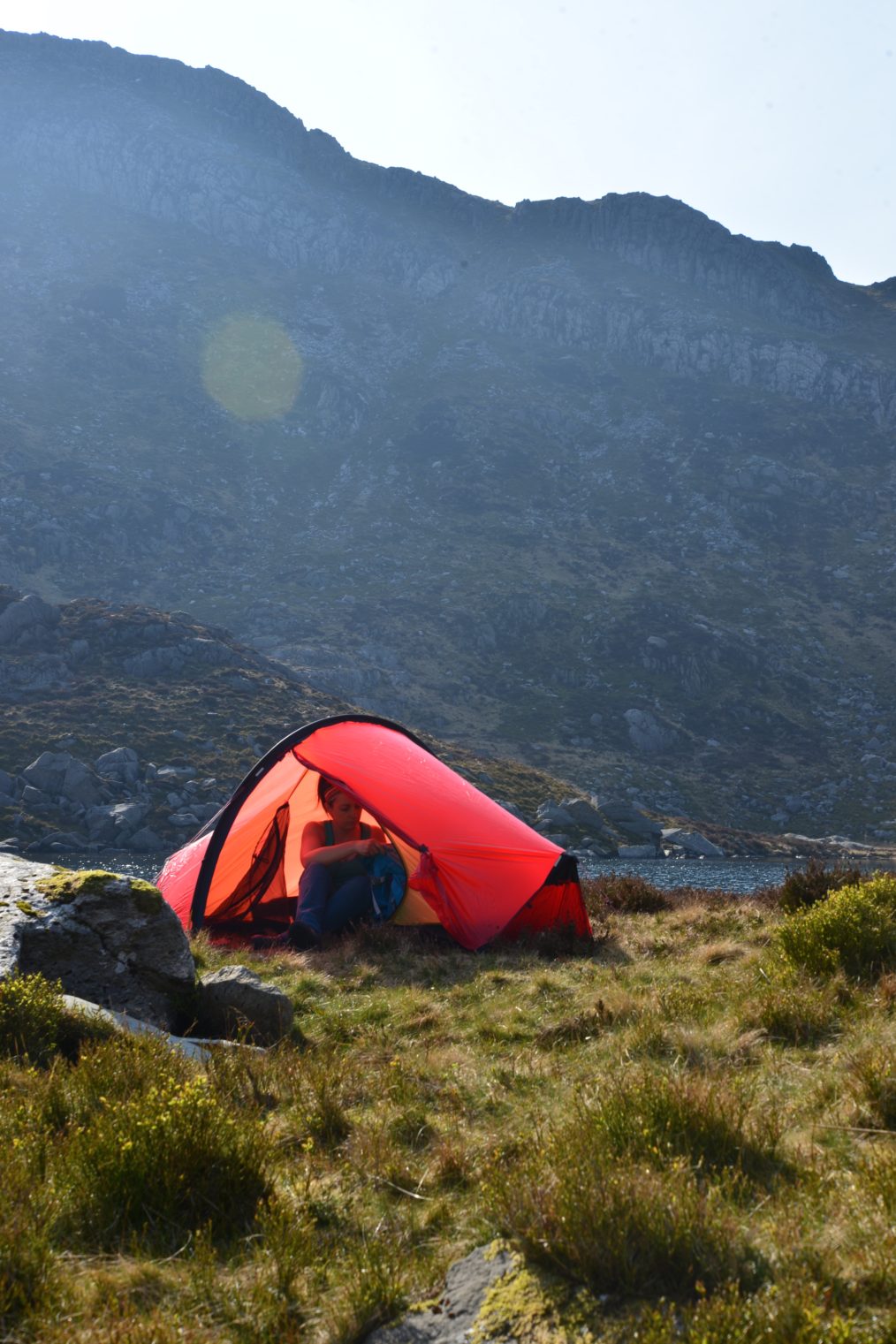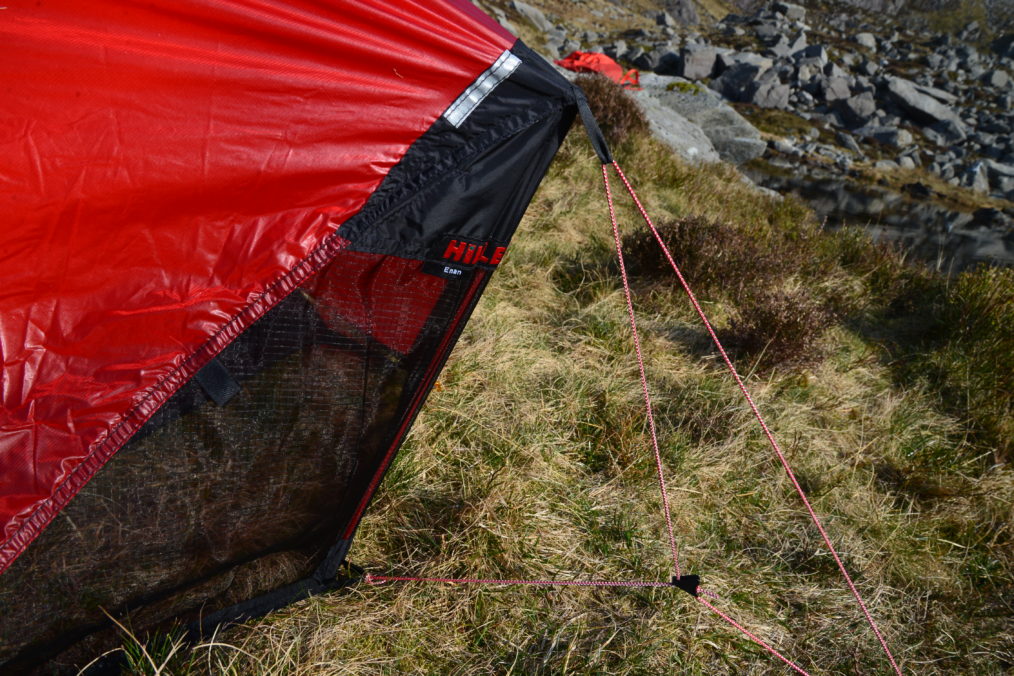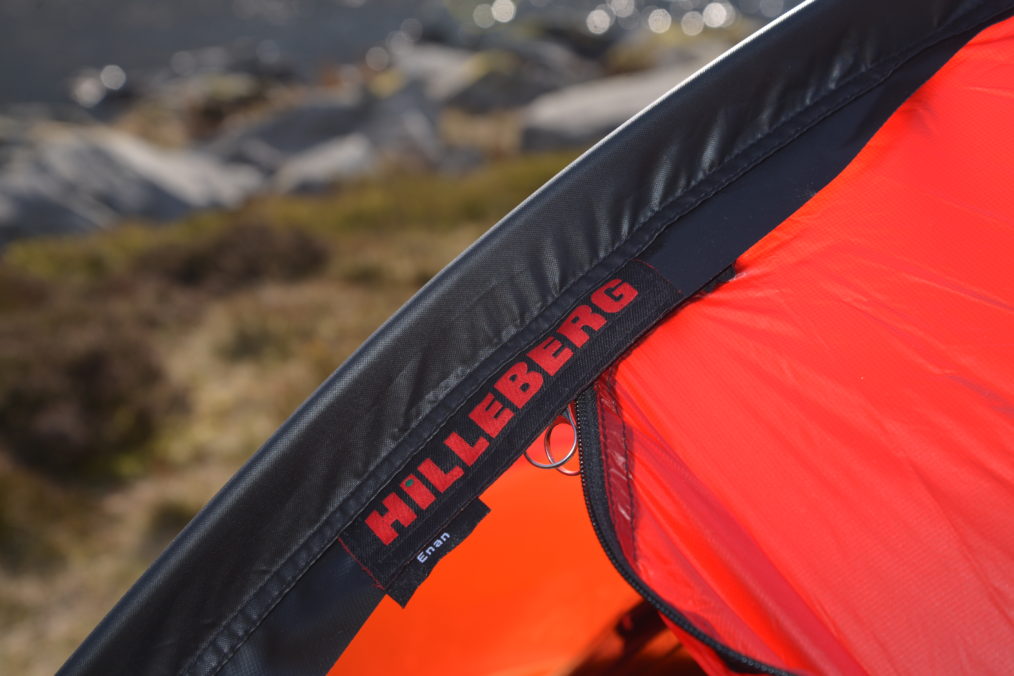In the Enan, Hilleberg have created a 3-season tent that is light but also durable
Swedish tentmakers Hilleberg are renowned for their super-tough tents that have been used on countless polar and high-altitude expeditions, but ‘lightweight’ is not a word necessarily associated with the brand. That may well change though with the introduction of the Enan 3-season solo backpacking tent, which weighs in at just over a kilo including pegs and bags, and a mere 870g for poles, fly sheet and inner.
The Enan is based on the design of the hugely popular Akto 4-season solo tent, with the interior space it offers being identical, and its overall dimensions virtually the same too. Hilleberg have managed to shave a significant amount of weight from the Akto – over half a kilo – and the main factor in achieving this is in the use of Kerlon 600, a 10-denier fabric that is half the weight of that used on the Akto. The company are keen to stress that they haven’t compromised the tent’s strength in the quest for weight savings, and indeed the Enan has the same 9mm poles that the Akto uses.
Pitch perfect
The Enan comes in a choice of two colours – red and green – and its components fit easily into the supplied stuffsack which has plenty of room. The package consists of the inner tent, flysheet, eight pegs and one pole. There are a number of pitching configurations available but we initially pitched the Enan as we think people will most of the time – inner and outer together. Pitching it this way is absurdly simple: peg out one end, insert the pole to create the central arch, then pull the other end tight and peg that out, and the tent is erect. Peg out the guylines and the job’s a good ‘un.
At each end of the Enan is a short, fixed, aluminium pole which raises the height of the tent thus increasing the amount of usable space inside. The inner tent is attached to the outer by a number of hooks and can be attached after the flysheet has been erected. This comes in handy if pitching the tent in the rain as you can keep the inner tent drier. The flysheet can be pitched and used just on its own which gives you enough room for two people, but of course it will lose the benefits of the double-skin design – condensation being the main issue, and it won’t be totally bugproof either. When conditions are very warm, you can also use the inner tent on its own, although to do this you will have to purchase an additional kit to enable the inner to be attached to the main pole in this mode. Speaking of optional extras, the Enan footprint would be pretty much a necessity if you’re planning to use the tent flysheet only, acting as a groundsheet in lieu of the inner tent. Bearing in mind the price of the Enan, a footprint would be a sensible investment in any case, since it’ll protect the groundsheet from stones or rocks that could damage the material.
Practicalities
For warm and sticky weather, ventilation is a key issue, and the Enan comes well equipped in this area. The door of the inner tent is mesh-only, and there are mesh vents at both the head and foot ends of the tent. These have fabric covers which tuck away and can be used in windy or rainy conditions, but Hilleberg stress that for most circumstances the vents should be uncovered to allow the free movement of air through the tent. Another option is to leave the flysheet door tied open to ensure that air can circulate, as even when raining it won’t allow water to get into the inner tent.
In use the Enan was surprisingly roomy. For an average-sized person the tent has plenty of space, with the vestibule giving enough room for both a mid-sized backpack on the longer side, and a cooking area on the short side. The shape of the floor is such that there is spare space around your sleeping mat for stashing more kit, and the height of nearly 1m at the tent’s midpoint is enough for anyone to sit up in the tent. Two stash pockets in the sides give you more options for storing items you want to keep close to hand.
During testing we used the tent for two people as well as one and, while admittedly very snug, it was certainly possible to lie side by side and get a decent night’s sleep – even without spooning! In warmer weather, you could also resort to using the tent in flysheet-only mode as previously mentioned, though bugs flying in under the flysheet could prove a problem in some situations.
We tested the tent in North Wales and in the Fiz mountains in the Alps, and with temperatures dropping to below zero at around 1,800m in the Alps, we could feel the cold air coming through the mesh door of
the inner tent. While this would be a problem in winter (the Akto has a fabric door which backs up the mesh panel) this is an indicator that in warm weather the mesh door should provide good ventilation. The structure of the Enan feels pretty rigid for a single-pole design, but would undoubtedly be tested in high winds.
Light and shade
It’s hard to find fault with the Enan; it’s as lightweight as most of us would need it to be, it’s a cinch to put up and take down, it’s roomy (for a 1-person tent), it’s stable and it offers good ventilation. There’s lots of thought gone into every detail, such as the pegs which are some of the best we’ve seen, being light but almost unbendable.
Being a Hilleberg tent, the Enan is not cheap, and to use its capabilities fully we would suggest purchasing the optional footprint and inner-only kit even though this will push the price up even further. But what you get is the superior design and build quality we’ve come to expect from the Swedish brand, and – providing you spend enough nights out under canvas with the Enan – it is likely to prove a wise investment in the long term.


